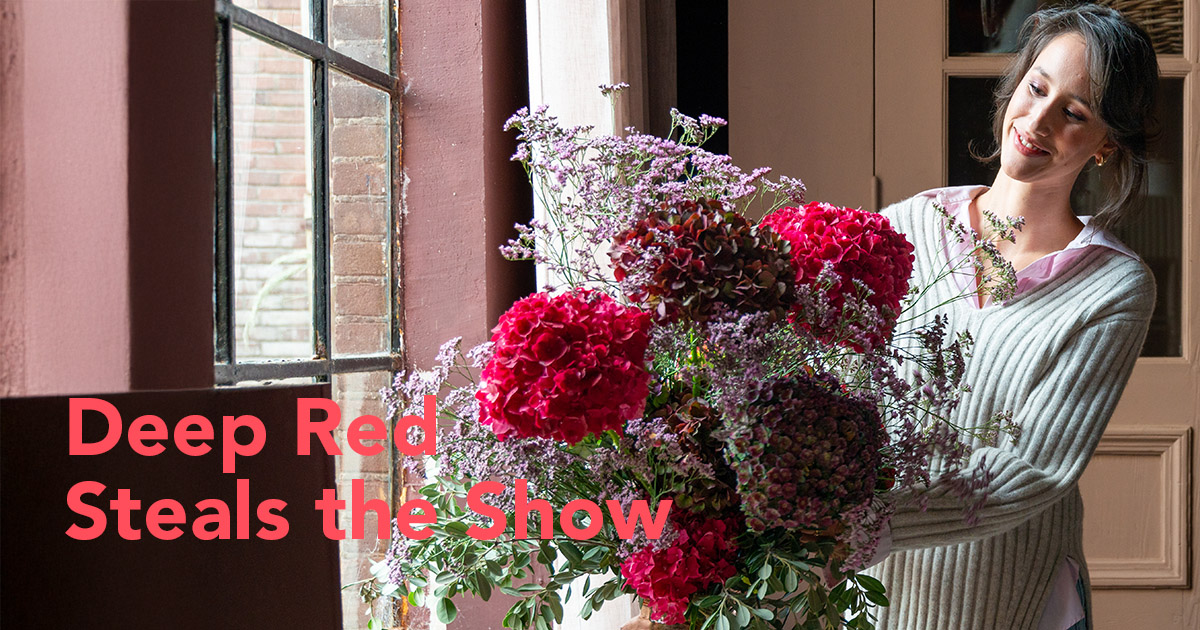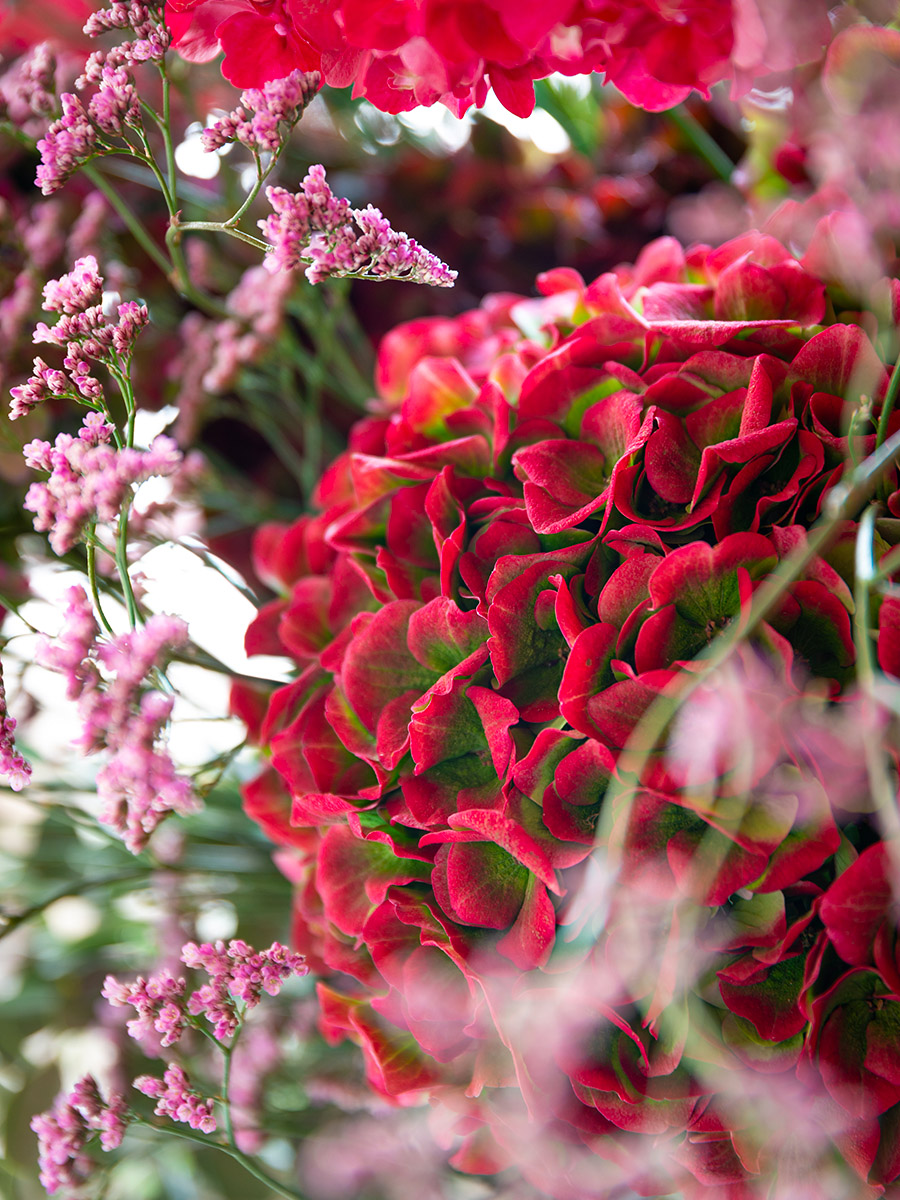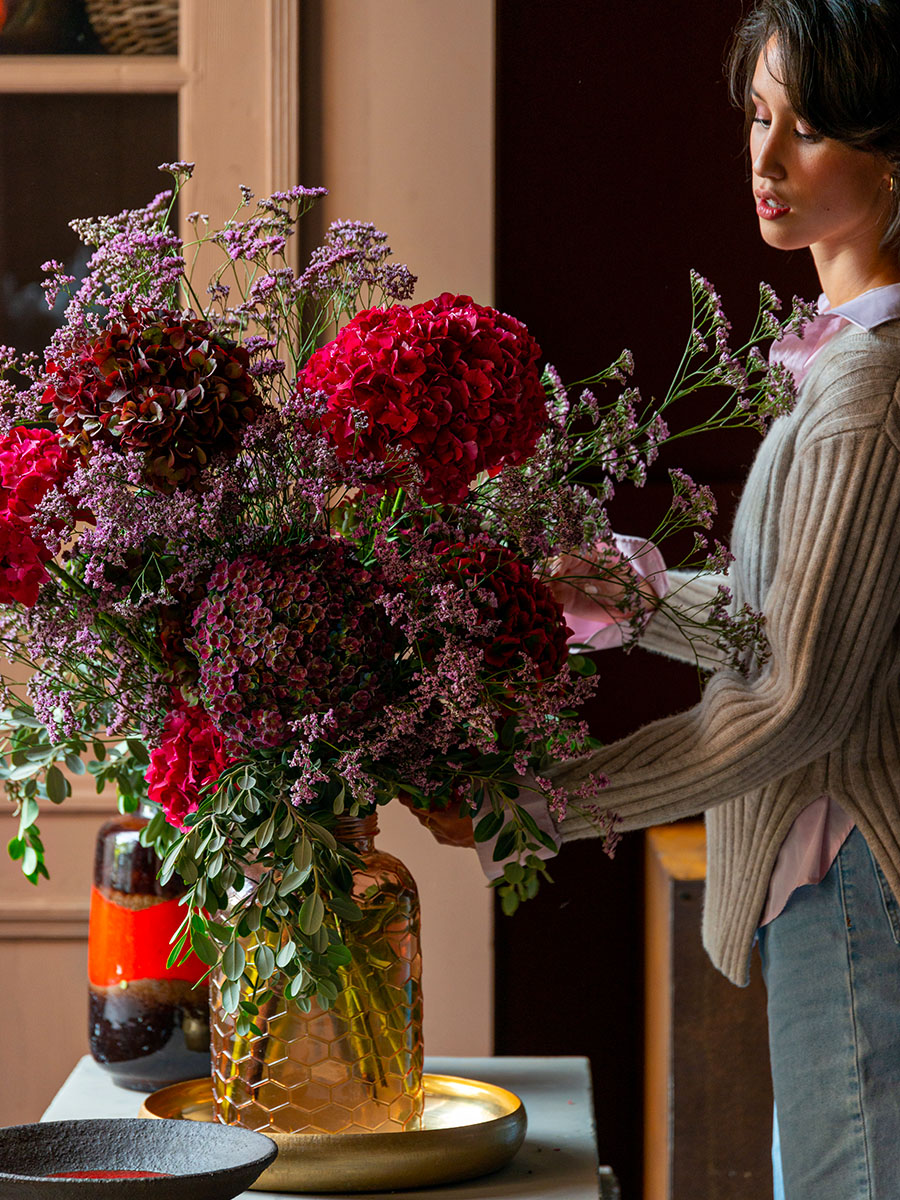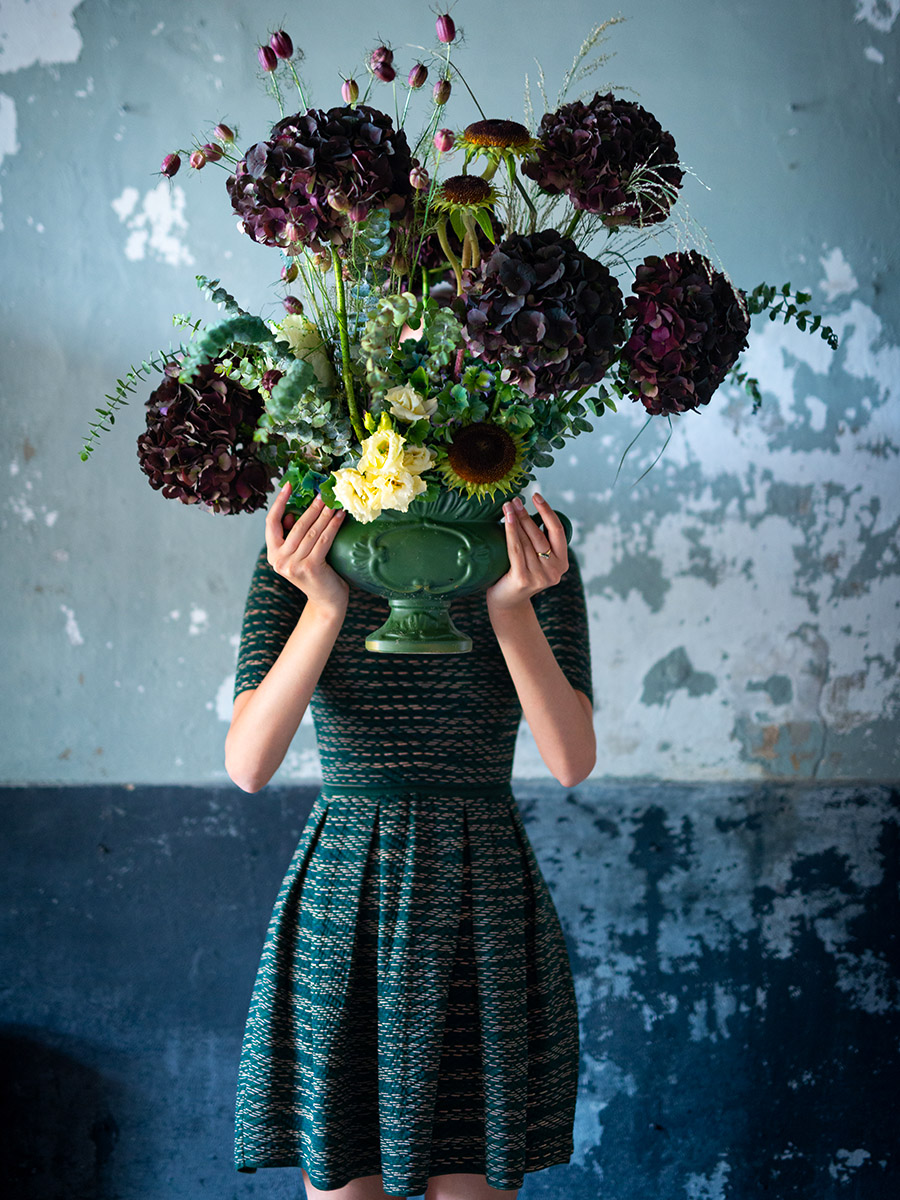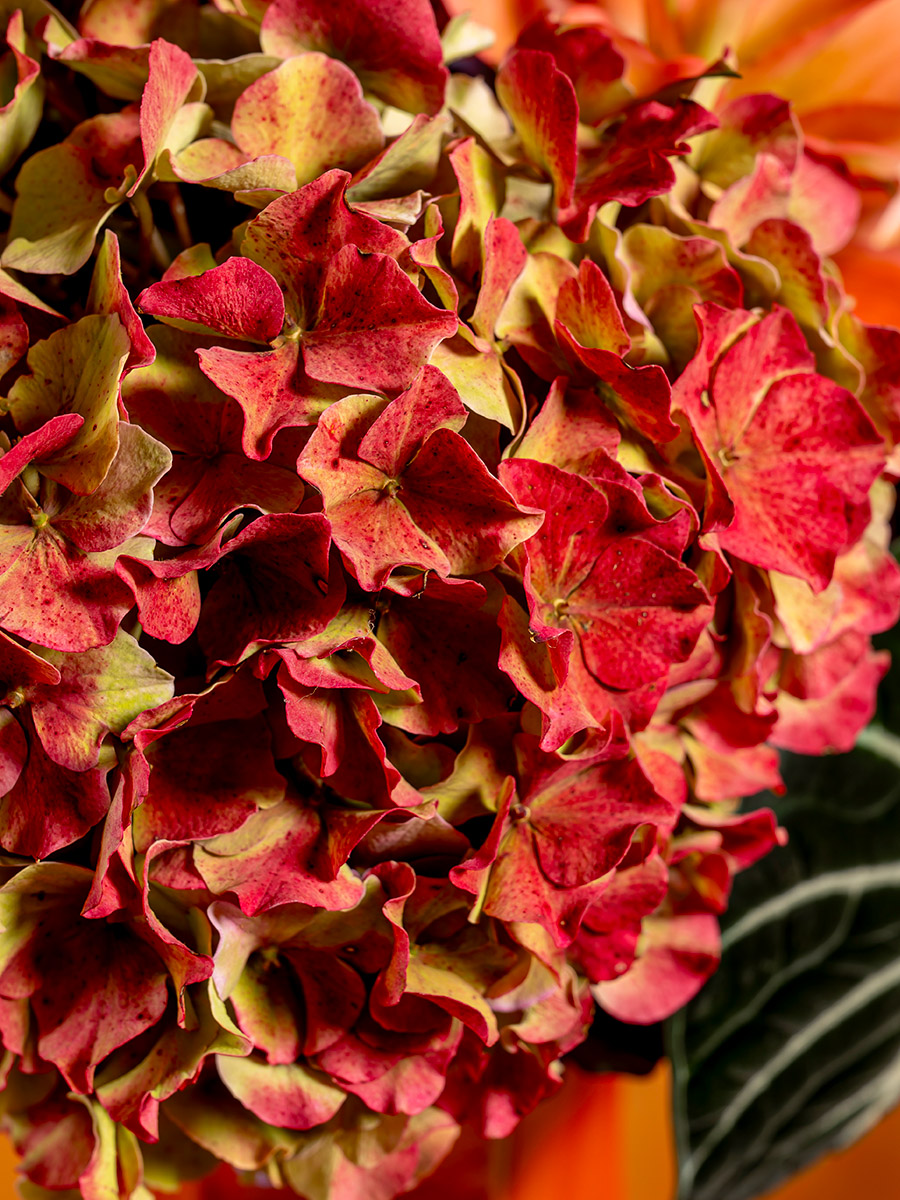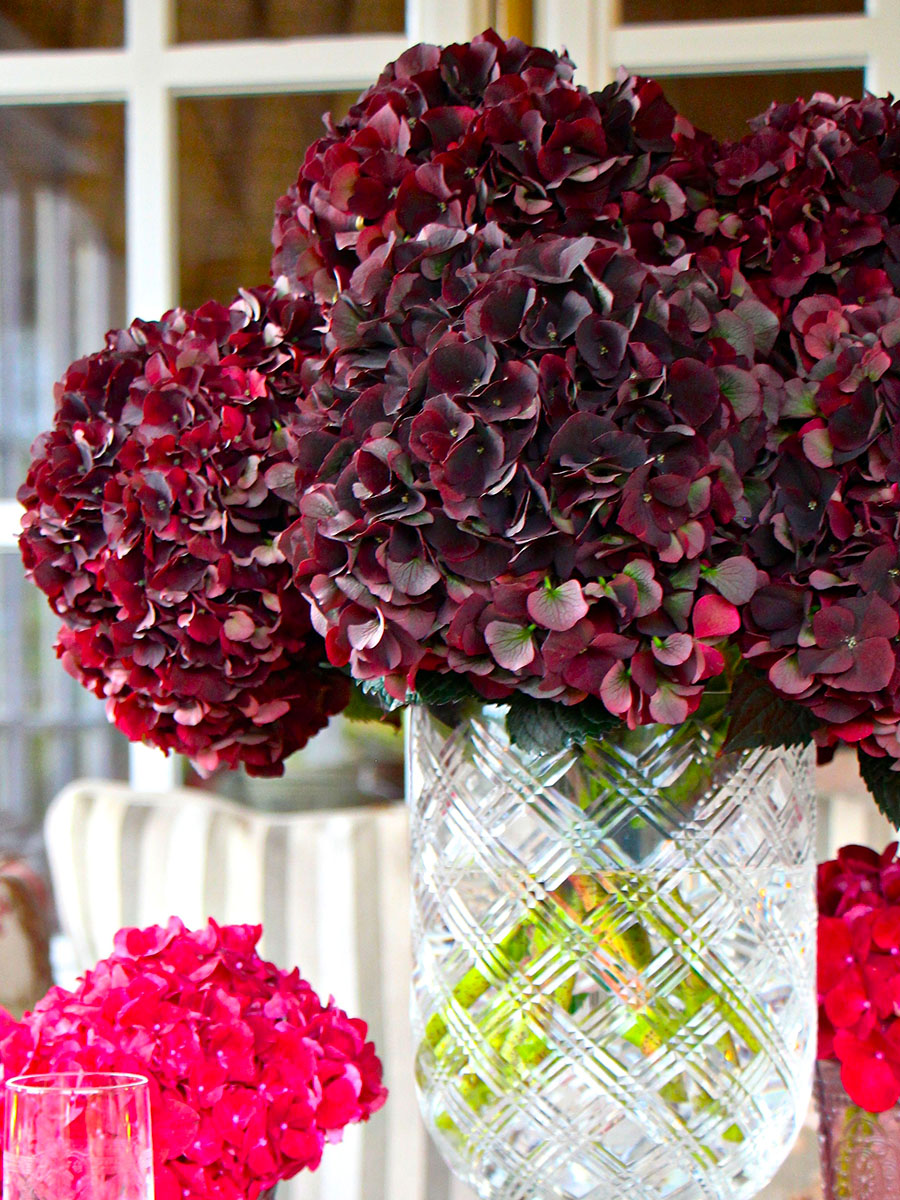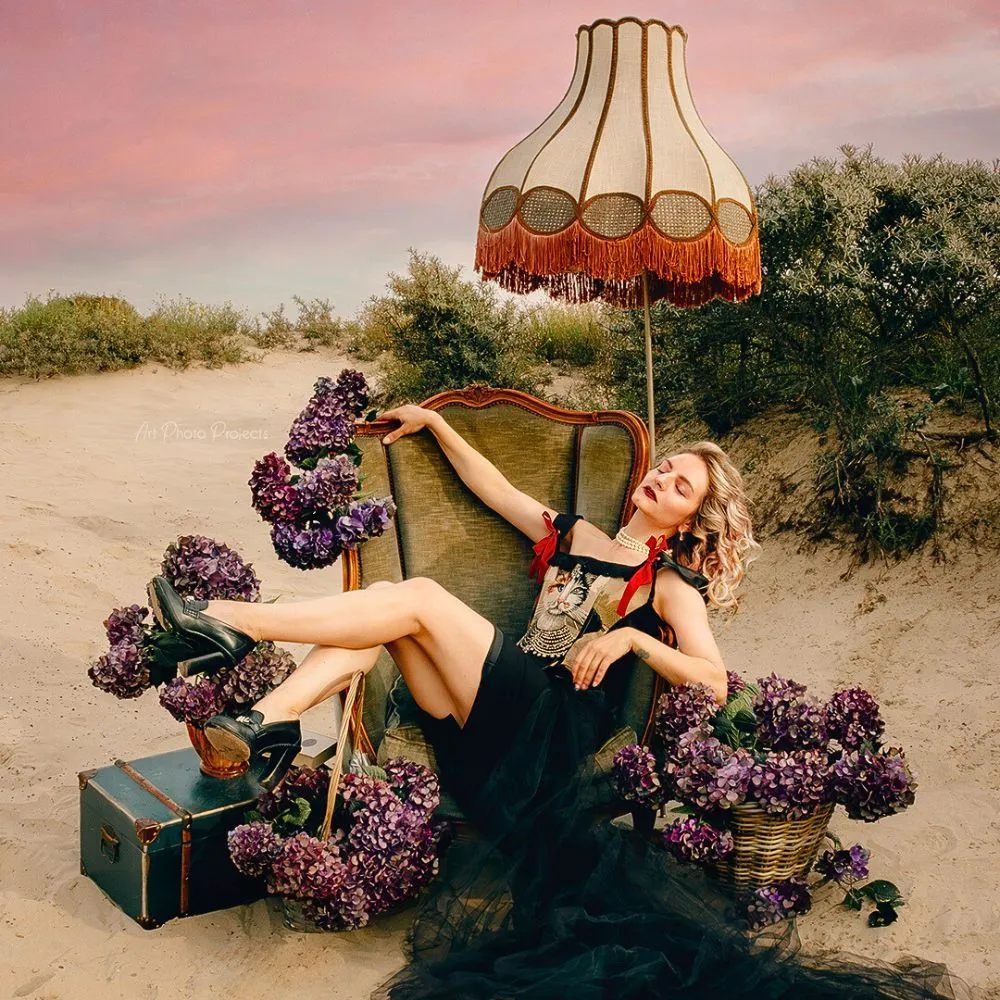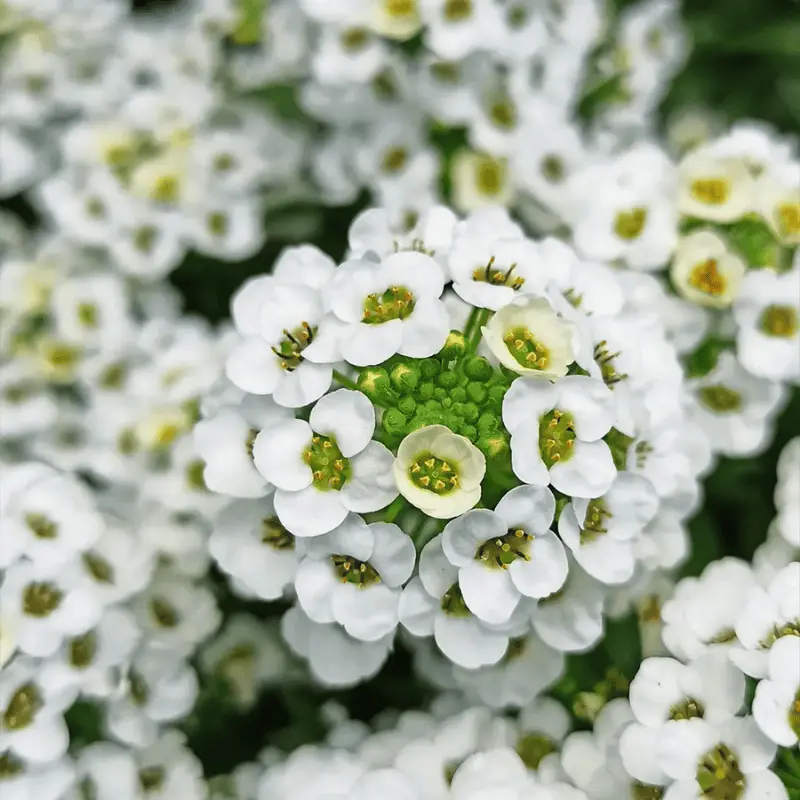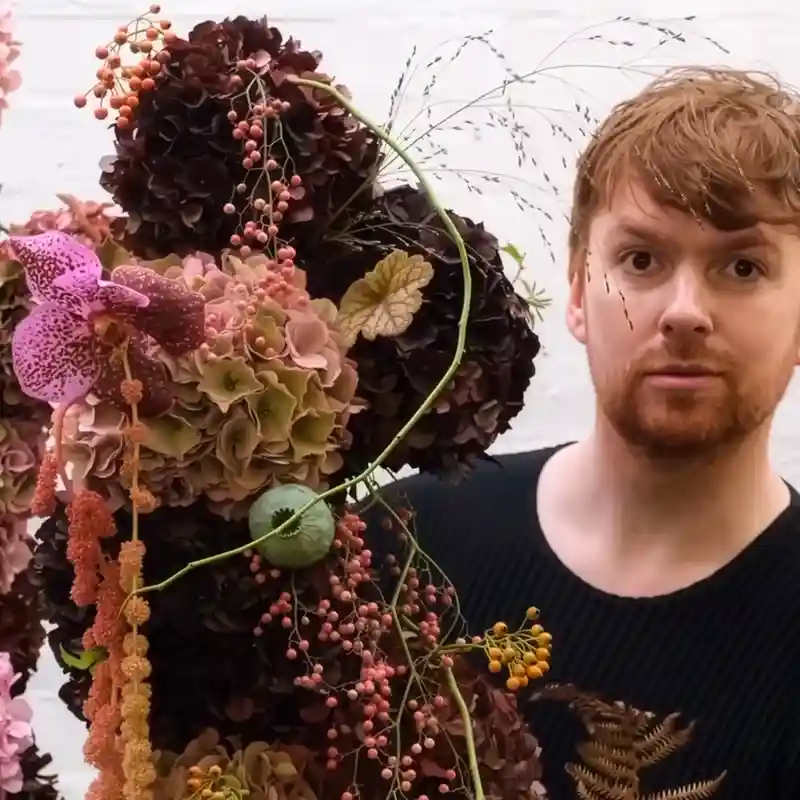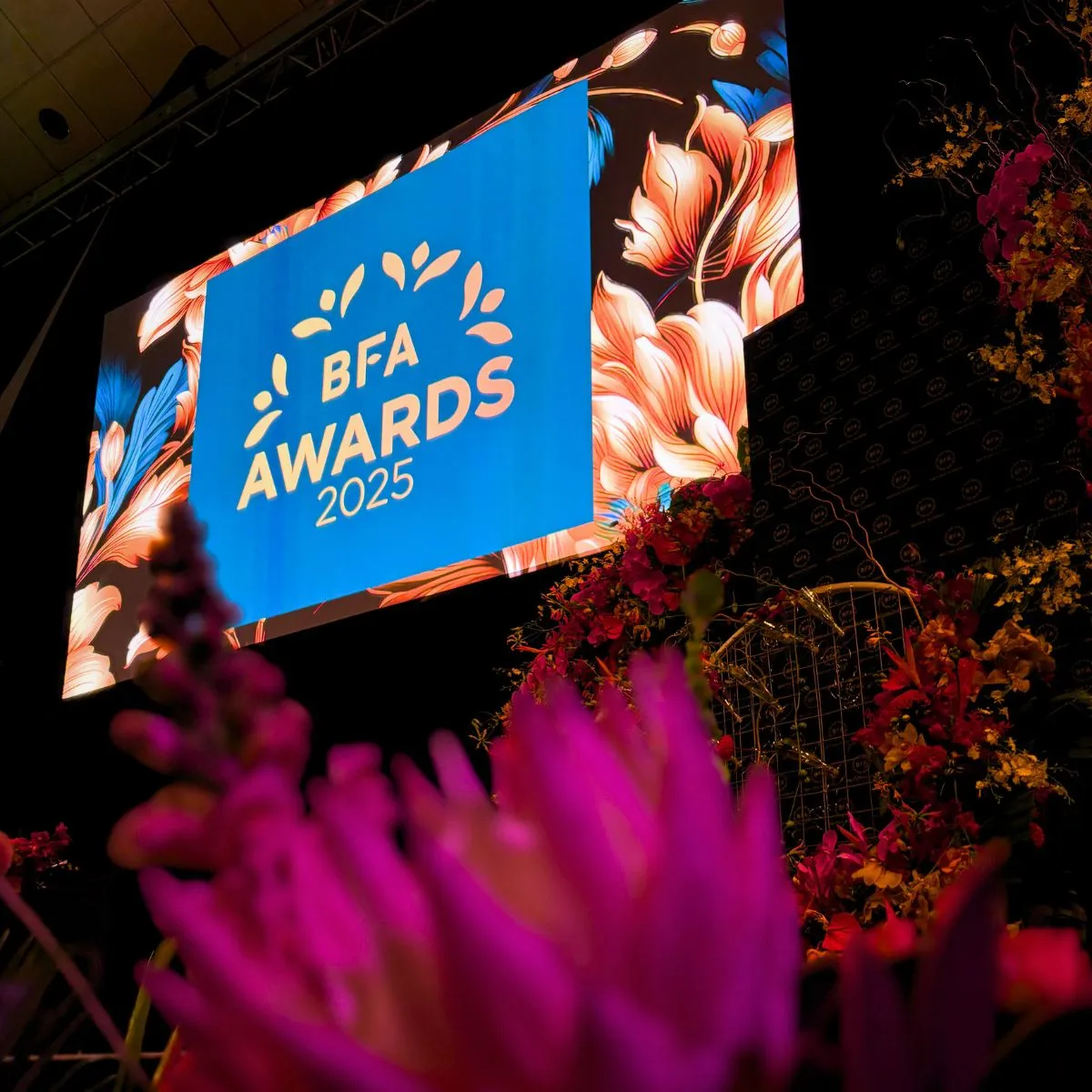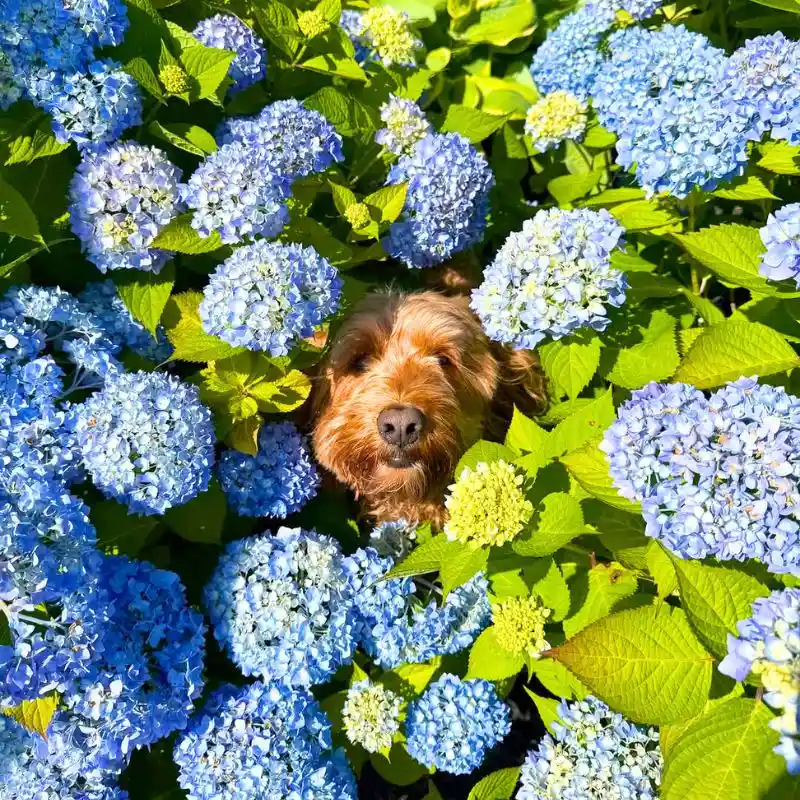Hydrangeas are the bold, beautiful statement-makers every florist needs in their cut flower arsenal. Known for their lush, rounded blooms and undeniable presence, they’re a go-to for creating drama with just a few stems. Among the different types of Hydrangeas, particularly the deep red Classic varieties are having their moment this autumn and winter. If you haven't embraced the magic of the season yet, you definitely will after reading on and checking out the designs.
Why Hydrangeas Are a Florist's Best Friend
Hydrangeas (a.k.a. Hortensias) are the kind of flower that offers great bang for the buck with opportunities to create something special using just a few stems. Their large blooms mean you don’t need many to fill a bouquet, making them as practical as they are eye-catching.

With both Fresh and Classic varieties available, they’re a year-round favorite, though each type serves a distinct purpose in the floral world.
- Fresh Hydrangeas are cut in their youthful prime, with spring and summertime time colors like whites, greens, pinks, blues, and purples. No wonder they're a staple choice for romantic bouquets and wedding arrangements.
- Classic Hydrangeas are harvested after their colors have matured into softer, richer, often moodier antique-like hues. When cut after this transformation, their color development halts, preserving their deeper tones for bouquets that exude sophistication.
This Season Deep Red Steals the Show
Hydrangeas are known for their big balls, and for sure, it's a whole new ball game when the seasons change. There are more examples in the floral world of flowers that get different hues when the seasons change, but few are as dramatic as the Hydrangea, giving them a whole new color palette and even a new name: Classic Hydrangea. As the blooms age on the plant, their colors shift into earthy tones of green, burgundy, and antique red. These shades are a florist's dream for creating designs that feel rich and grounded, perfect for autumn and winter.
This season, deep red Classic Hydrangeas are stealing the spotlight. Their dramatic tones pair effortlessly with the muted warmth of the colder months. These hydrangeas don’t just offer color; they bring texture and depth, making them ideal for everything from minimalist arrangements to opulent centerpieces.

Bringing Classic Hydrangeas to Life
The deep red hues of Classic Hydrangeas are unlike anything else. They exude warmth and richness that feel perfect for the colder months, offering florists a chance to create bouquets that feel both bold and inviting. Whether used as the focal point in an arrangement or as a supporting player, they elevate any design they touch. So, are you ready to create big bouquets? Here's some inspo to get you started.
Classic Hydrangeas mix and match perfectly with fillers and greens like purple Statice or other varieties of Limonium, or foliage like Cordyline of Eucalyptus. Try a few of those big disbudded burgundy Chrysanthemums, brown Anthuriums, or dark red Cymbidium orchids to enhance the autumn atmosphere. Or for a touch of playfulness, you might go for the jumpy Gloriosa or Sanguisorba. Don't worry, you will get tons of inspiration on the go!
Sustainability With Style: The Dried Hydrangea Trend
One of the best-kept secrets about Classic Hydrangeas is their versatility as a dried flower. Cut at their peak, they dry beautifully, retaining their color and structure for months. Dried hydrangeas are more than a trend—they’re a sustainable choice. With the growing demand for eco-friendly floral options, these long-lasting blooms are a way to offer clients bouquets that align with their values.
A bouquet featuring dried Classic Hydrangeas isn’t just a floral arrangement—it’s a timeless keepsake. Combine them with other dried elements like pampas grass, seed pods, or preserved foliage, and you’ve got a showstopper that lasts.
Can't Get Enough of Those Dark Shades?
Yes, there are more Classic Hydrangeas than the deep red ones. So, what else is in store? The Classics assortment goes pretty wide, from antique green to greenish-blue, purple, and almost black.

Working With Hydrangeas: Tips for Florists
Hydrangeas are resilient but can be finicky if not handled properly. Here are some tips to keep them looking their best:
- Prepare the stem: Scrape off around the bottom 5 cm of the site to enhance water absorption and keep the flower healthy for longer.
- Hydration is key: Hydrangeas love water. Always keep them hydrated, and for fresh stems, give them a deep cut and submerge the heads in water for about 30 minutes if they start to wilt.
- Temperature matters: Keep Hydrangeas in a cool, shaded area. Too much direct sunlight or heat can cause them to dry out prematurely.
- Preserve for dried arrangements: Let your Classic Hydrangeas dry naturally in a vase with just a little water. This method allows them to retain their shape as they transition into a dried state.
Hydrangea Is Not Just a Flower
As autumn fades into winter, Classic Hydrangeas remain a florist’s best friend. They’re versatile, sustainable, and undeniably beautiful. Whether you’re building large-scale arrangements or crafting minimalist designs, these hydrangeas bring an unmatched level of depth and drama to your work. If you’re looking for flowers that deliver on quality, value, and style, it’s time to have Classic Hydrangeas—especially those deep reds—in your cooler.
Remember this: They’re not just flowers; they’re a statement, a mood, and a celebration of the season. And they’re a solution; their bold presence means you can design with fewer stems while still creating a full, luxurious look. Plus, with their ability to dry beautifully, you’re not just offering a bouquet; you’re offering longevity.

For more inspiration and tips, head over to Hydrangea World, where you’ll find even more reasons to fall in love with this floral powerhouse.

